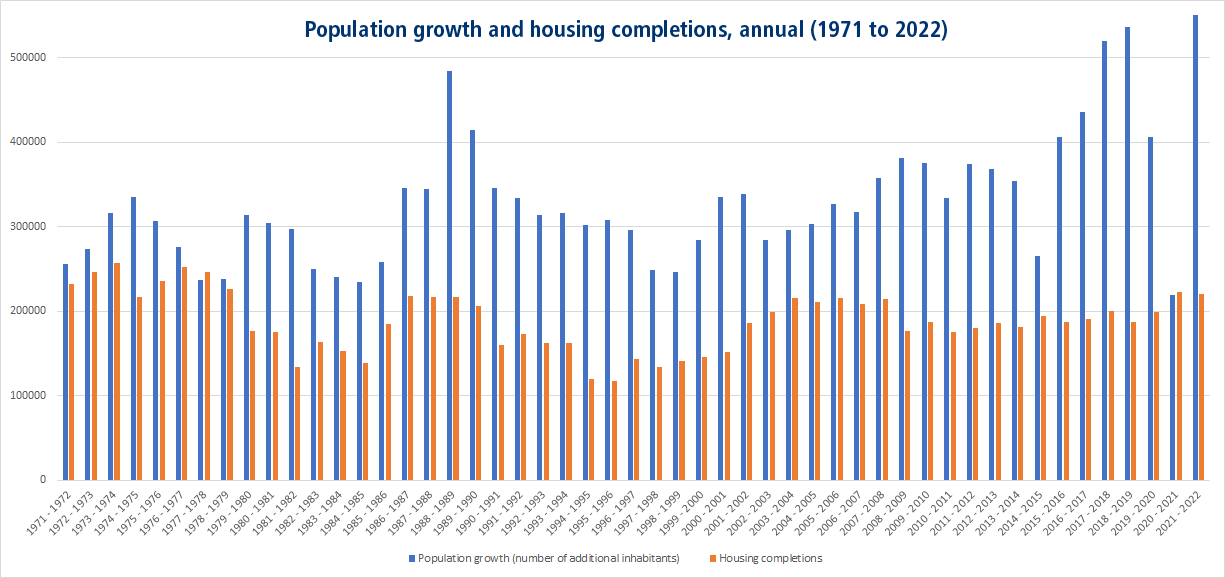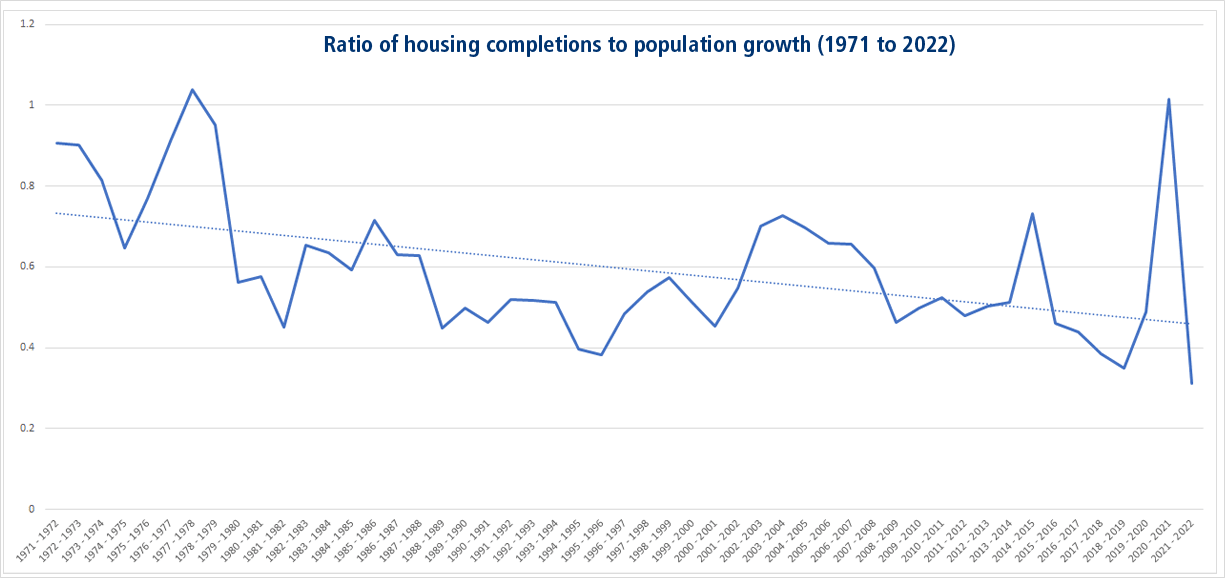Canadian homebuilding has not kept pace with population growth

Canada isn’t building enough homes. According to recent comparisons, Canada lags its international peers in total homes per person. But another way to highlight current shortages is to compare Canada’s housing supply performance over time.
Consider this. In the 1970s, a new home was built for every 1.2 additional Canadian inhabitants (on average). In the 2010s, a new home was built for every 2.1 new inhabitants. In fact, more than 200,000 homes were completed in every single year of the 1970s except one. This happened only once in the 2010s, and thankfully looks to be more common in the current decade.
In other words, we used to build a lot more housing in this country than we do now, in both relative and absolute terms. To better illustrate this trend, the second chart below shows the ratio of annual housing completions to annual population growth from 1971 to 2022—the full extent of comparable data.
Though this ratio moves up and down in individual years, the overall trend is one of decline by roughly 40 per cent over the entire period. Of course, the ratio is driven by both a numerator (housing completions) and a denominator (population growth), meaning that years coupling robust population growth and steady or lagging housing supply bring the ratio down. Conversely, years with steady or higher completions and slow population growth push the ratio up, as was the case during the COVID border closures.
Nevertheless, the broad trend observed over the entire period is one of declining housing completions, both relative to population growth and overall.
This trend should worry Canadians. Shelter is a basic need, and insufficient supply relative to demand means fewer homes available to renters and buyers alike. It also means higher rents and home prices, which is especially damaging to low-income families and first-time buyers.
But there’s good news. We’ve proven we can balance supply and demand—if more homes were built in the 1970s than today, with a smaller population, then there’s little reason why we can’t do it again. Ultimately, it’s a matter of political will and if Canadian policymakers—at all levels of government—want to restore housing availability and affordability for current and future generations, they should help restore the historical balance between population growth and housing stock growth.
Authors:
Subscribe to the Fraser Institute
Get the latest news from the Fraser Institute on the latest research studies, news and events.



